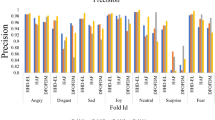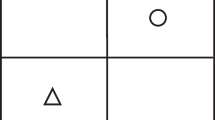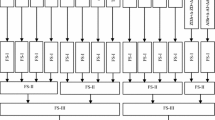Abstract
Automatic emotion recognition from speech signals is one of the important research areas. Most speech emotion recognition methods have been proposed, among which ensemble learning is an effective way. However, they are still confronted with problems, such as the curse of dimensionality and the diversity of the base classifiers hardly ensured. To overcome the problems, this paper proposes an ensemble Softmax regression model for speech emotion recognition (ESSER). It applies the feature extraction methods with much different principles to generate the subspaces for the base classifier, so that the diversity of the base classifiers could be ensured. Furthermore, a feature selection method that selects features according to global structure of the data is used to reduce the dimension of subspaces, which can further increase the diversity of the base classifiers and overcome the curse of dimensionality. As in the case of the diversity of the base classifiers ensured, the performance of ensemble classifier highly depends on the ability of the base classifier, it is reasonable for ESSER to select Softmax as the base classifier as Softmax has shown its superiority in speech emotion recognition. The conducted experiments validate the proposed approach in term of the performance of speech emotion recognition.



Similar content being viewed by others
References
Attabi Y, Dumouchel P (2013) Anchor models for emotion recognition from speech. IEEE Trans Affect Comput 4(3):280–290
Brown G, Pocock A, Zhao M-J, Lujan M (2012) Conditional likelihood maximisation: a unifying framework for information theoretic feature selection. J Mach Learn Res 13:27–66
Burkhardt F, Paeschke A, Rolfes M, Sendlmeier WF, Weiss B (2005) A database of German emotional speech. In: Proc. INTERSPEECH, Lisbon, p 1517–1520
Cai D, Zhang C, He X (2010) Unsupervised feature selection for multi-cluster data. In: Proc. international conference on knowledge discovery and data mining, p 333–342
Cao H, Verma R, Nenkov A (2014) Speaker-sensitive emotion recognition via ranking: studies on acted and spontaneous speech. Comput Speech Lang in Press, Fan
Chang C-C, Lin C-J (2011) LIBSVM -- a library for support vector machines. ACM Trans Intell Syst Technol 2(3):1–27
Chawla NV, Bowyer KW, Hall LO, Kegelmeyer WP (2002) Smote: synthetic minority over-sampling technique. J Artif Intell Res 16:321–357
Comparing multiple classifiers for speech-based detection of self confidence—a pilot study
Cover T, Hart P (1967) Nearest neighbor pattern classification. IEEE Trans Inf Theory 13(1):21–27
Danisman T, Alpkocak A (2008) Emotion classification of audio signals using ensemble of support vector machines. Percep Multimodal Dialogue Syst 5078:205–216
El Ayadi M, Kamel MS, Karray F (2011) Survey on speech emotion recognition: features, classification schemes, and databases. Pattern Recogn 44(3):572–587
Ellis DPW (2005) PLP and RASTA in Matlab. http://www.ee.columbia.edu/~dpwe/resources/matlab/rastamat/
Eyben F, Wöllmer M, Schuller B (2010) openSMILE-The Munich versatile and fast open-source audio feature extractor. In: ACM Multimedia (MM), Florence, p 1459–1462
Haq S, Jackson PJB (2009) Speaker-dependent audio-visual emotion recognition. In: Proc. International Conference on Auditory Visual Speech Processing (AVSP), p 53–58
Hassan A, Damper RI (2012) Classification of emotional speech using 3DEC hierarchical classifier. Speech Comm 54(7):903–916
Hassan A, Damper R, Niranjan M (2013) On acoustic emotion recognition: compensating for covariate shift. IEEE Trans Audio Speech Lang Process 21(7):1458–1468
Hermansky H (1990) Perceptual linear predictive (PLP) analysis of speech. J Acoust Soc Am 87(4):1738–1752
Hermansky H, Morgan N, Bayya A, Kohn P (1992) RASTA-PLP speech analysis technique. In: IEEE International Conference on Acoustics Speech and Signal Processing (ICASSP), Dallas, p 121–124
Huang Y, Guobao Z, Xu X (2009) Speech emotion recognition research based on the stacked generalization ensemble neural network for robot pet. In: Proc. Chinese Conference on Pattern Recognition (CCPR), p 1–5
Huang D-Y, Zhang Z, Ge SS (2014) Speaker state classification based on fusion of asymmetric simple partial least squares (SIMPLS) and support vector machines. Expert Syst Appl 28(2):392–419
Kobayashi VB, Calag VB (2013) Detection of affective states from speech signals using ensembles of classifiers. In: Proc. IET Intelligent Signal Processing Conference (ISP), p 1–9
Kockmann M, Burget L, Cernocky J (2009) Brno University of Technology System for Interspeech 2009 emotion challenge. In: Proc. INTERSPEECH
Leea C-C, Mowera E, Bussob C, Leea S, Narayanana S (2011) Emotion recognition using a hierarchical binary decision tree approach. Speech Comm 53(9–10):1162–1171
Mariooryad S, Busso C (2014) Compensating for speaker or lexical variabilities in speech for emotion recognition. Speech Comm 57:1–9
Milton A, Tamil Selvi S (2014) Class-specific multiple classifiers scheme to recognize emotions from speech signals. Comput Speech Lang 28(3):727–742
Morrison D, De Silva LC (2007) Voting ensembles for spoken affect classification. J Netw Comput Appl 30(4):1356–1365
Morrison D, Wang R, De Silva LC (2007) Ensemble methods for spoken emotion recognition in call-centers. Speech Comm 49(2):98–112
Natalie van der Wal C, Kowalczyk W (2013) Detecting changing emotions in human speech by machine and humans. Neural Comput & Applic 39(4):675–691
Nocedal J, Damper R, Niranjan M (1980) Updating quasi-Newton matrices with limited storage. Math Comput 35(151):773–782
Ntalampiras S, Fakotakis N (2012) Modeling the temporal evolution of acoustic parameters for speech emotion recognition. IEEE Trans Affect Comput 3(1):116–125
Ooi CS, Seng KP, Ang L-M, Chew LW (2014) A new approach of audio emotion recognition. Expert Syst Appl 14(13):5858–5869
Park J-S, Kim J-H, Yung-Hwan O (2009) Feature vector classification based speech emotion recognition for service robots. IEEE Trans Consum Electron 55(3):1590–1596
Peng H, Long F, Ding C (2005) Feature selection based on mutual information: criteria of max-dependency, max-relevance, and min-redundancy. IEEE Trans Pattern Anal Mach Intell 27(8):1226–1238
Qian Y, Ying L, Pingping J (2013) Speech emotion recognition using supervised manifold learning based on all class and pairwise-class feature extraction. In: Proc. IEEE Conference Anthology, p 1–5
Rozgic V, Ananthakrishnan S, Saleem S, Kumar R, Prasad R (2012) Ensemble of SVM trees for multimodal emotion recognition. In: Signal & information processing association annual summit and conference (APSIPA ASC), Hollywood, p 1–4
Sarker MK, Alam KMR, ArifuzzamanM (2014) Emotion recognition from speech based on relevant feature and majority voting. In: Proc. International Conference on Informatics, Electronics & Vision, p 1–5
Schuller B, Reiter S, Muller R, Al-Hames M, Lang M, Rigoll G (2005) Speaker independent speech emotion recognition by ensemble classification. In: Proc. IEEE International Conference on Multimedia and Expo(ICME), Amsterdam, p 864–867
Schuller, S. Steidl, A. Batliner (2009) The INTERSPEECH 2009 emotion challenge. In: Proc. INTERSPEECH
Schuller B, Steidl S, Batliner A (2010) The INTERSPEECH 2010 paralinguistic challenge. In: proc. INTERSPEECH, p 2794–2797
Schuller B, Vlasenko B, Eyben F, Wollmer M, Stuhlsatz A, Wendemuth A, Rigoll G (2012) Cross-corpus acoustic emotion recognition: variances and strategies. IEEE Trans Affect Comput 1(2):119–131
Steidl S (2009) Automatic classification of emotion related user states in spontaneous children’s speech. Logos Verlag
Vlasenko B, Prylipko D, Böck R, Wendemuth A (2014) Modeling phonetic pattern variability in favor of the creation of robust emotion classifiers for real-life applications. Comput Speech Lang 28(2):483–500
Voicebox: speech processing toolbox for MATLAB, http://www.ee.ic.ac.uk/hp/staff/dmb/voicebox/doc/voicebox/index.html
Wagner J, Lingenfelser F, Andre E, Kim J (2011) Exploring fusion methods for multimodal emotion recognition with missing data. IEEE Trans Affect Comput 4(2):206–218
Weiss GM, Provost F (2001) The effect of class distribution on classifier learning, technical report, Department of Computer Science, Rutgers University
Wu S, Falk TH, Chan W-Y (2011) Automatic speech emotion recognition using modulation spectral features. Speech Comm 24(7):768–785
Yan R, Liu Y, Jin R, Hauptmann A (2003) On predicting rare cases with SVM ensembles in scene classification. In: Proc. International Conference on Acoustics, Speech, and Signal Processing
Yuanlu K, Li L (2013) Speech emotion recognition of decision fusion based on DS evidence theory. In: Proc. International Conference on Software Engineering and Service Science, p 795–798
Zhao X, Zhang S, Lei B (2014) Robust emotion recognition in noisy speech via sparse representation. Neural Comput & Applic 24(7-8):1539–1553
Zheng W, Xin M, Wang X, Wang B (2014) A novel speech emotion recognition method via incomplete sparse least square regression. IEEE Signal Process Lett 21(5):569–572
Acknowledgments
This work was supported by China National Science Foundation under Grants 60973083, 61273363, State Key Laboratory of Brain and Cognitive Science under grants 08B12.
Author information
Authors and Affiliations
Corresponding author
Rights and permissions
About this article
Cite this article
Sun, Y., Wen, G. Ensemble softmax regression model for speech emotion recognition. Multimed Tools Appl 76, 8305–8328 (2017). https://doi.org/10.1007/s11042-016-3487-y
Received:
Revised:
Accepted:
Published:
Issue Date:
DOI: https://doi.org/10.1007/s11042-016-3487-y




